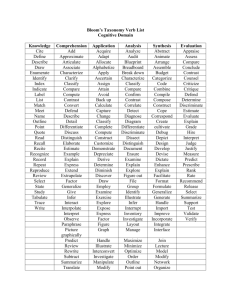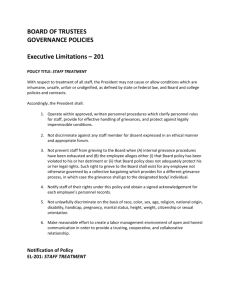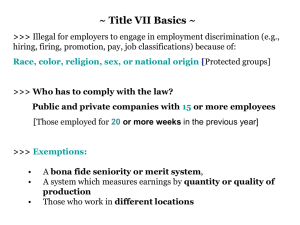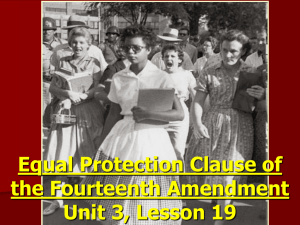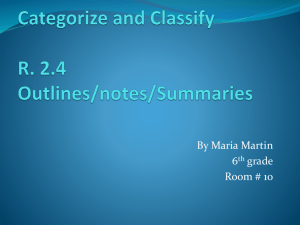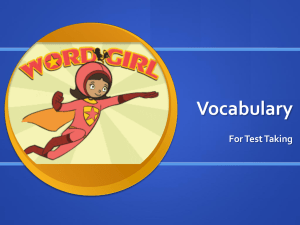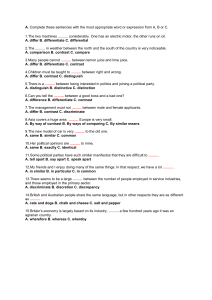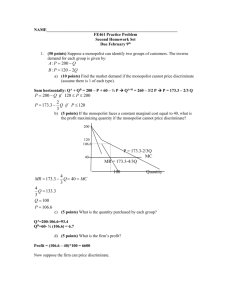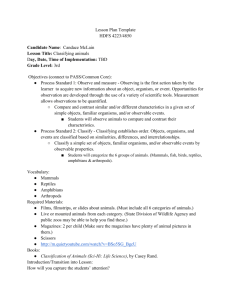Learning Theory
advertisement
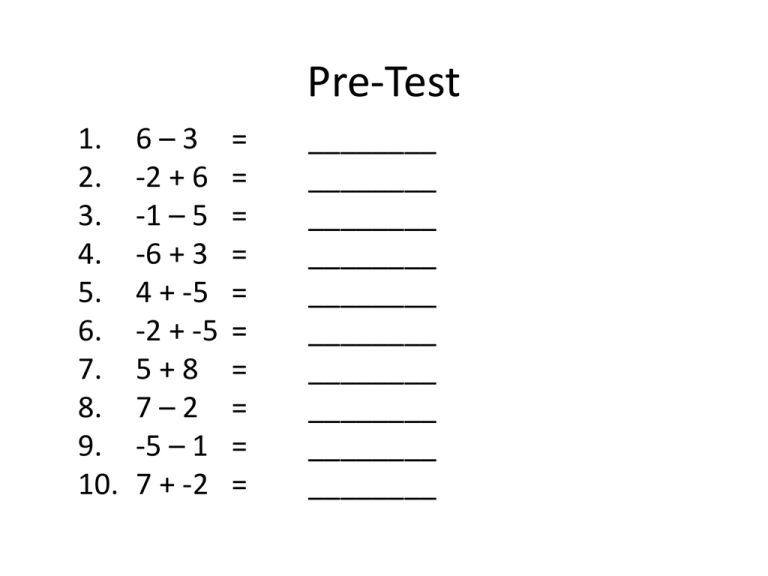
Pre-Test 1. 2. 3. 4. 5. 6. 7. 8. 9. 10. 6–3 -2 + 6 -1 – 5 -6 + 3 4 + -5 -2 + -5 5+8 7–2 -5 – 1 7 + -2 = = = = = = = = = = ________ ________ ________ ________ ________ ________ ________ ________ ________ ________ Learning Theory WHAT IS 25 X 25 ? WHAT IS 25 X 25 ? Types of Learning •Problem solving (Rules) •Facts • Physical skills Problem Solving • The behavior • The rule statement Problem Solving Adding Integers • The behavior -7 + 5 • The rule statement when the signs are different, subtract and use the sign of the larger number Types of Learning • • • • • Tying your shoes Solving: 5X + 3 = 2X – 7 Spelling hippopotamus Swinging a bat knitting Name some other skills that are problem solving Name some other skills that are facts Name some other shills that are physical Learning • Learning is an internal process under the control of the individual • Teaching is an external process under the control of the instructor Students • Listen • Study • Practice Teachers • Teachers set the (external prompts for the) CONDITIONS OF LEARNING Conditions of Learning • For each type of learning, there should be different types of conditions Conditions (Steps) in Learning Problem Solving (Original Learning) • • • • Discriminate between items Classify items into groups Name the groups Determine a solution strategy (an algorithm) • If possible, give the behavior a rule statement Algorithm • A step by step procedure to solve a problem Discriminate Between Items Discriminate Between Items 1. 2. 3. 4. 5. 6. 7. X2 + 3X = 6 3X – 8 = 2X + 5 3X2 = 9 3X + 6 = 2X 9X = 18X2 X=0 9X + X2 = 0 • How do you solve Algebra I problems? • How do you solve Algebra 2 problems? A General Approach To Solve Problems (After Original Learning) • Recognize the problem • Remember the algorithm 1. 2. 3. 4. 5. 6. 7. 8. 9. 10. Recognize the problem Remember the algorithm a 8–3 = ________ -3 + 5 -4 – 9 -4 + 5 8 + -5 -3 + -6 5+4 3–2 -6 – 2 9 + -5 = = = = = = = = = ________ ________ ________ ________ ________ ________ ________ ________ ________ Summary Types of learning Problem solving the behavior the rule statement Facts Physical skills Steps in learning (Original learning – learning for the first time) Discriminate between items Classify items into groups Name the groups Approach to Problem Solving (After original learning) Recognize the problem Remember the algorithm Name the Command Structures • Tree Commands • Fluid User Interface (FUI) Name the Groups Classify into Groups Name the Groups • Group 1 • Group 2 • Group 3
